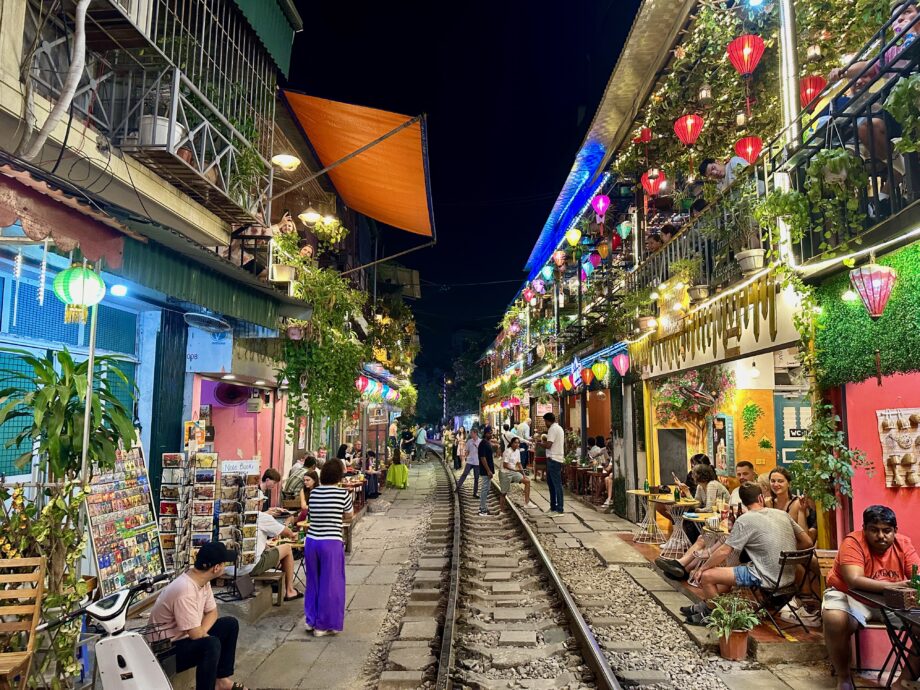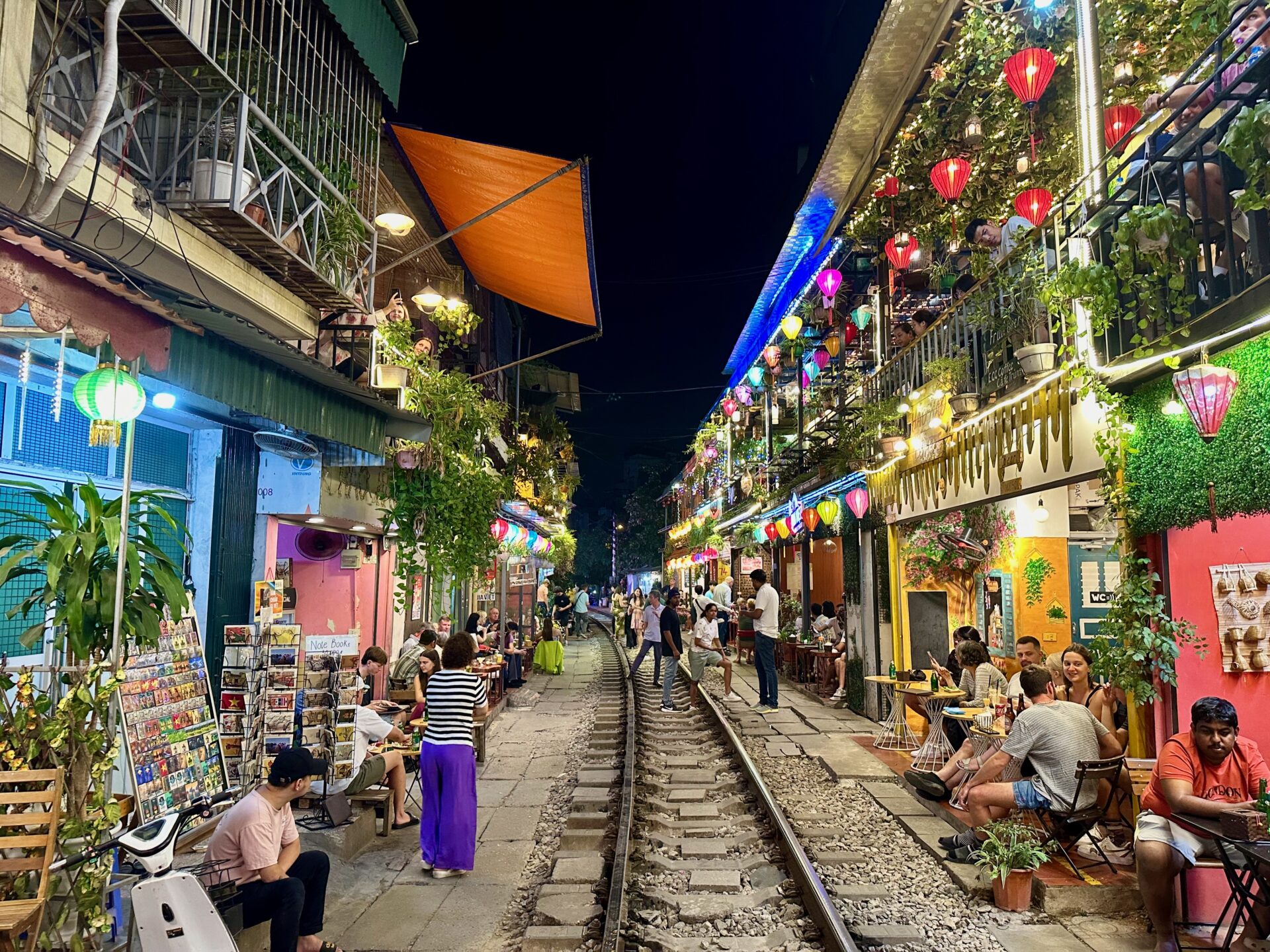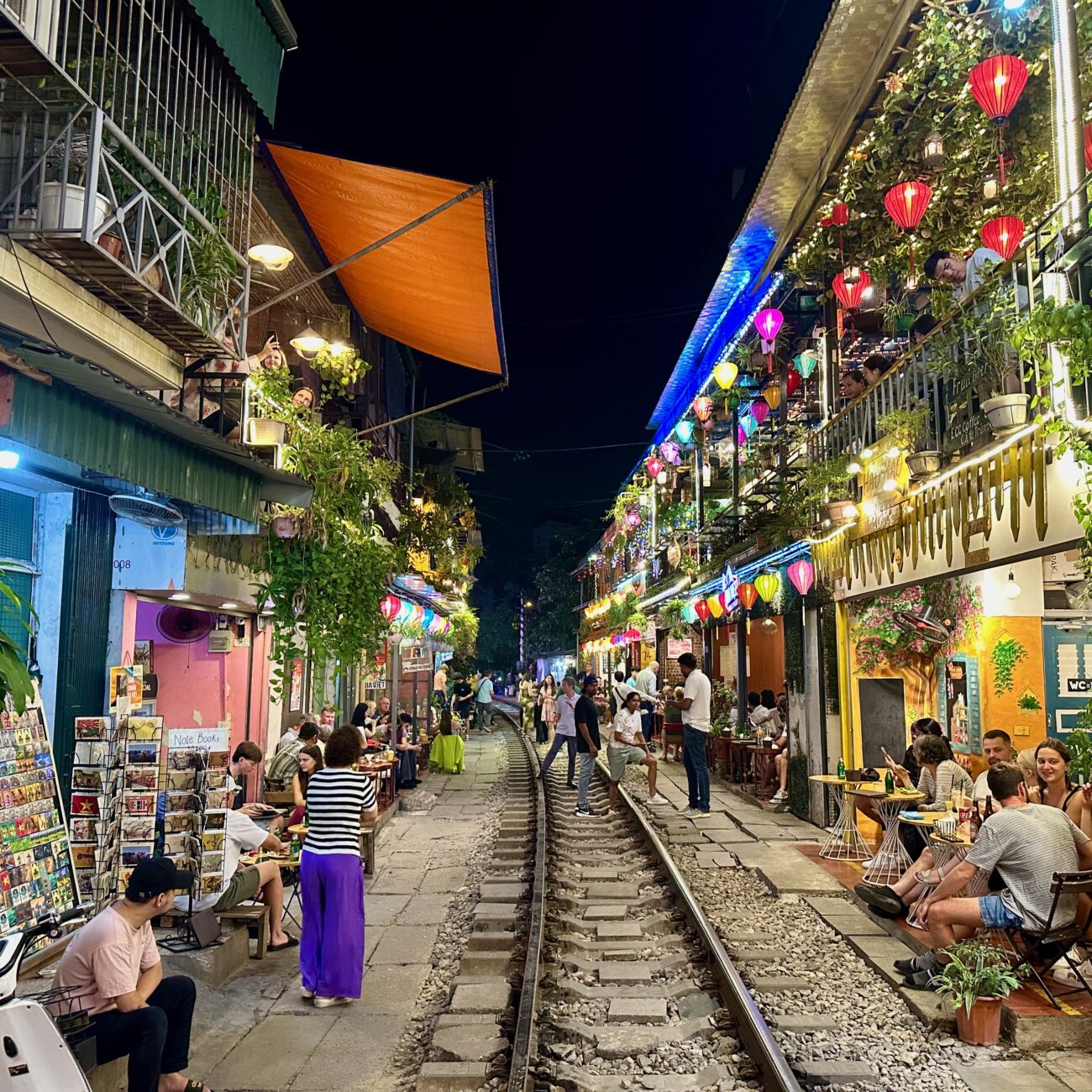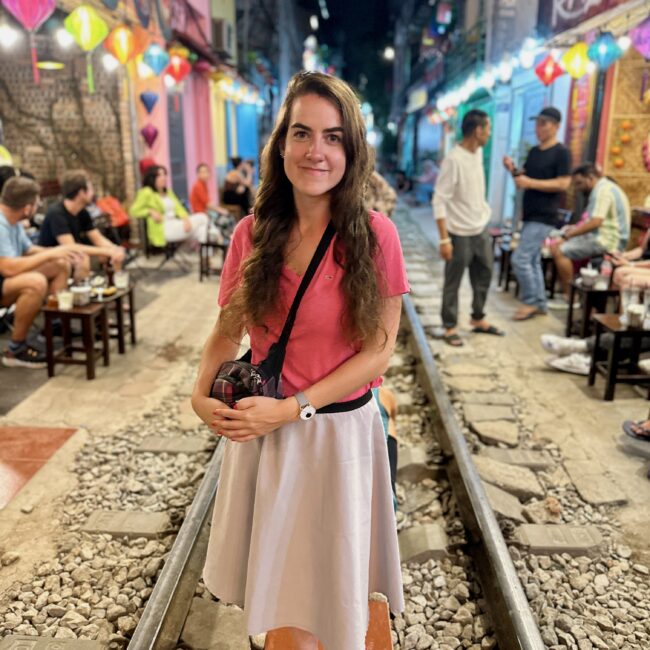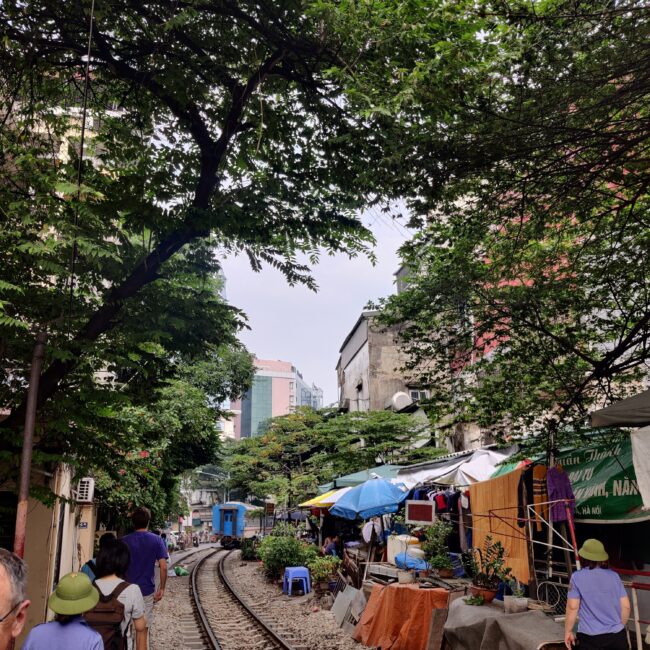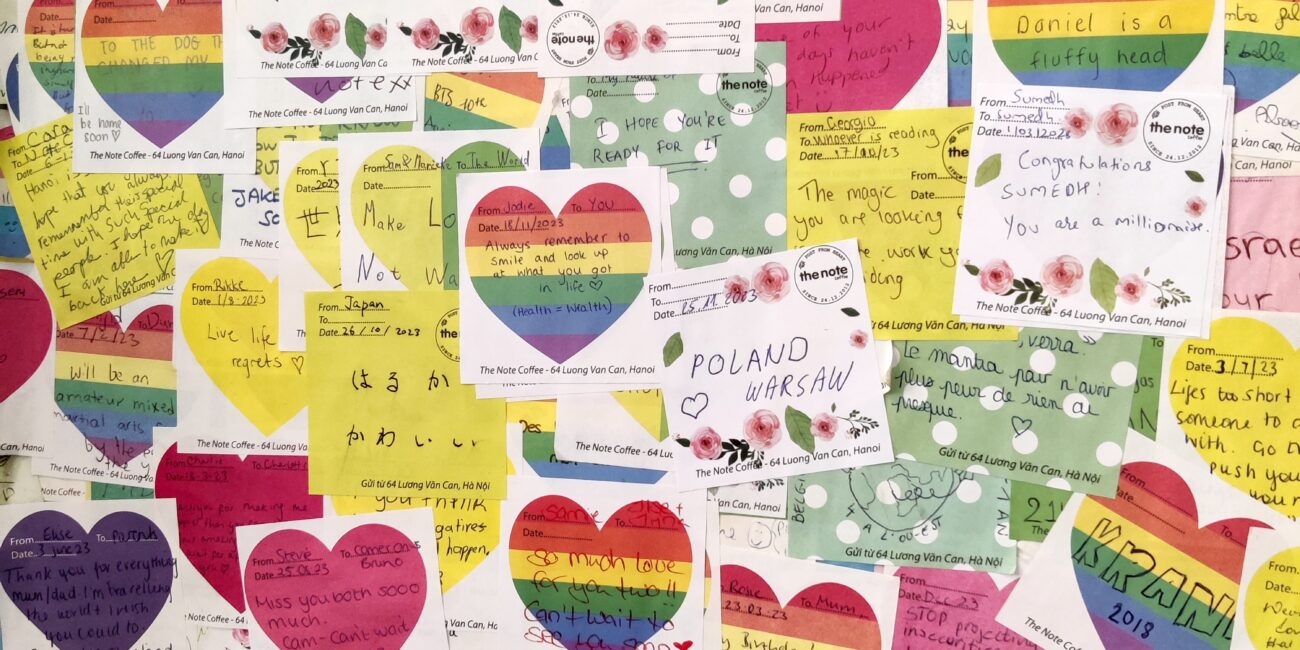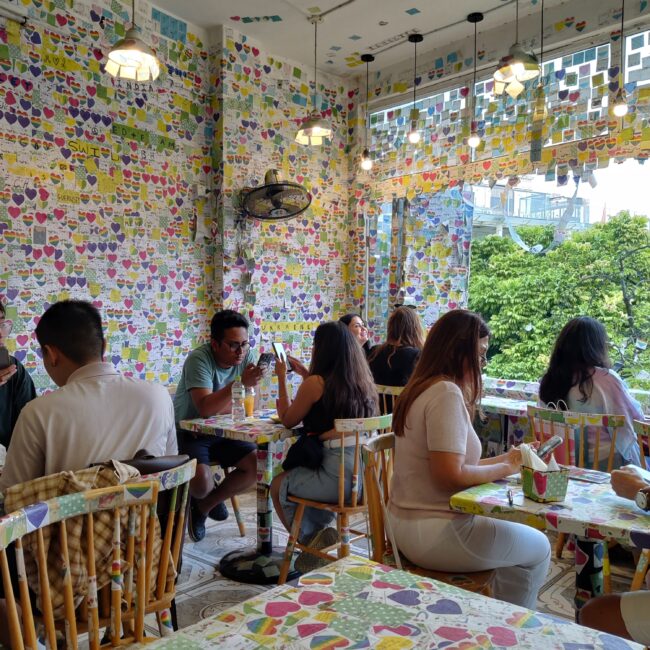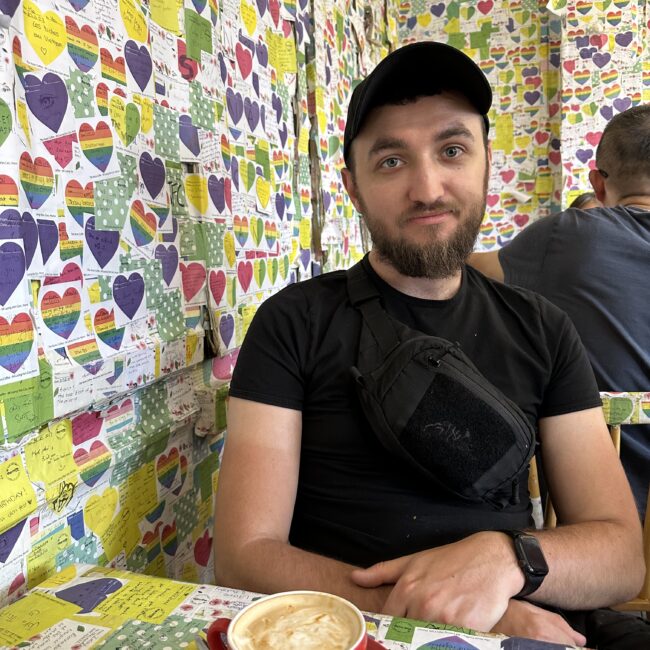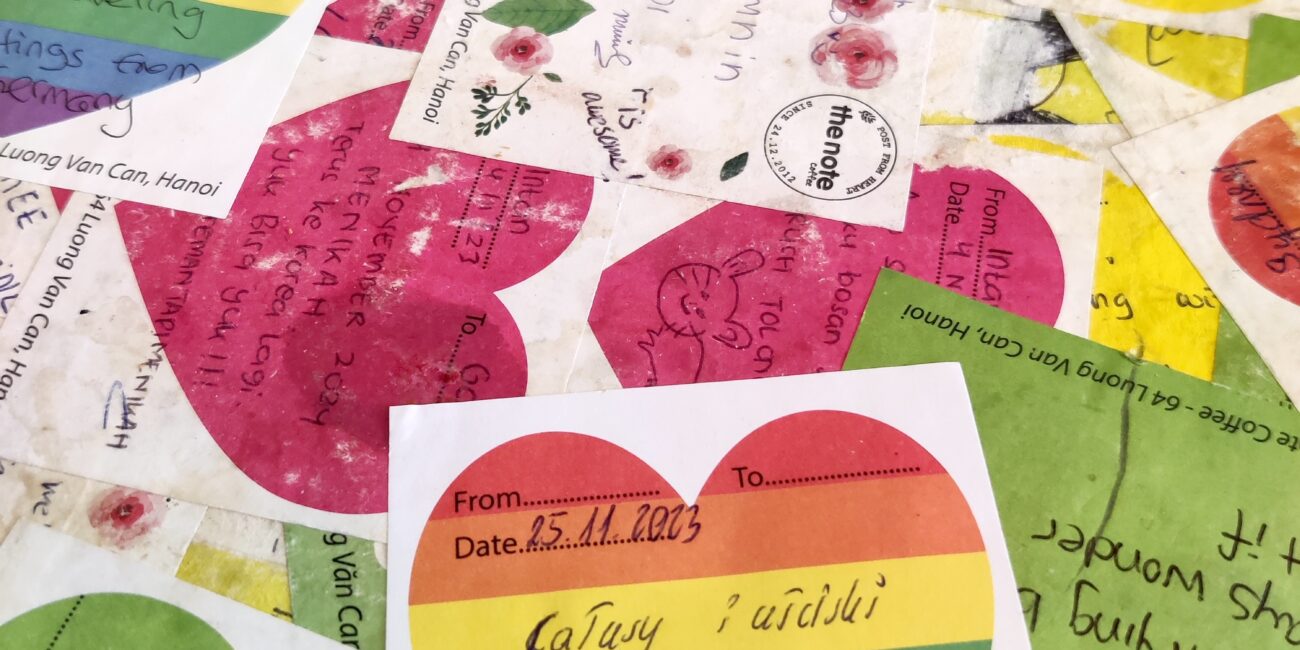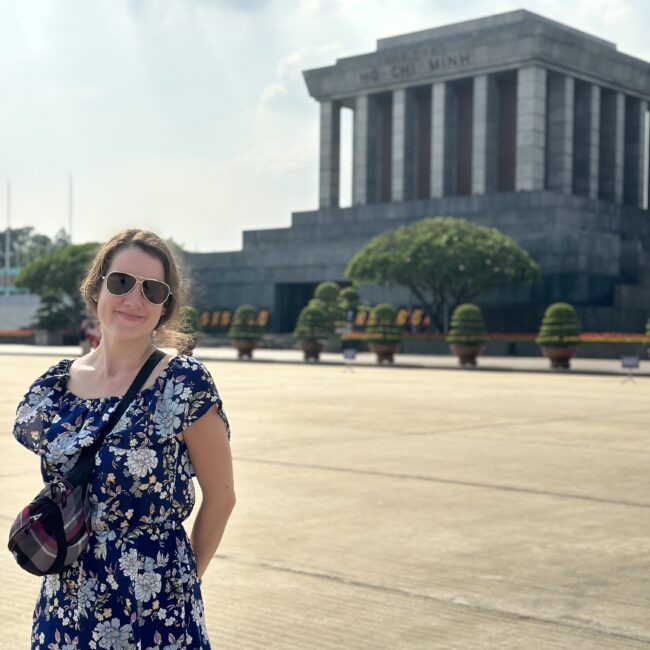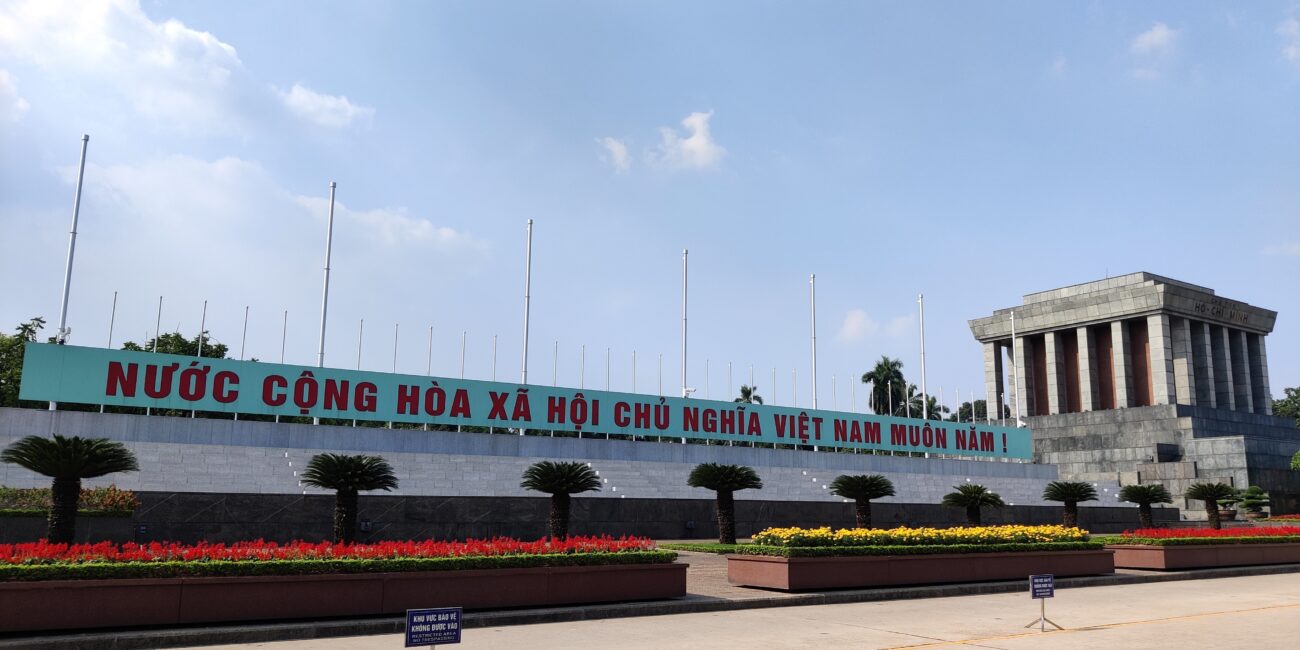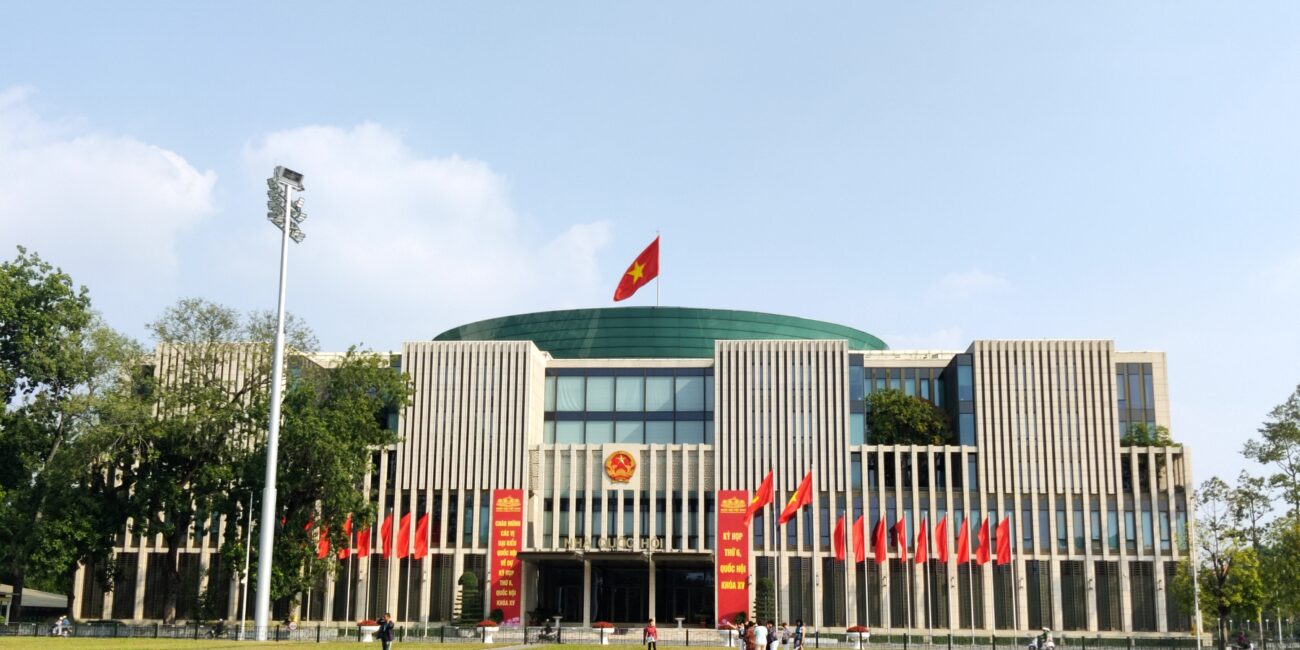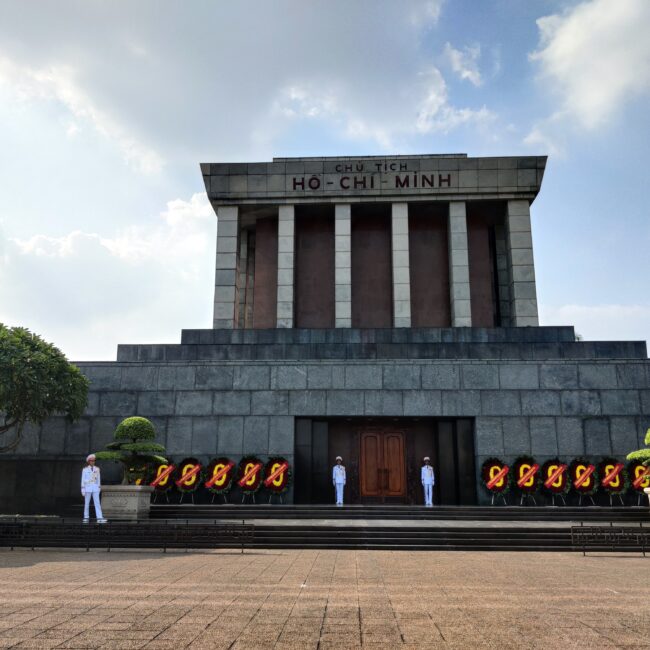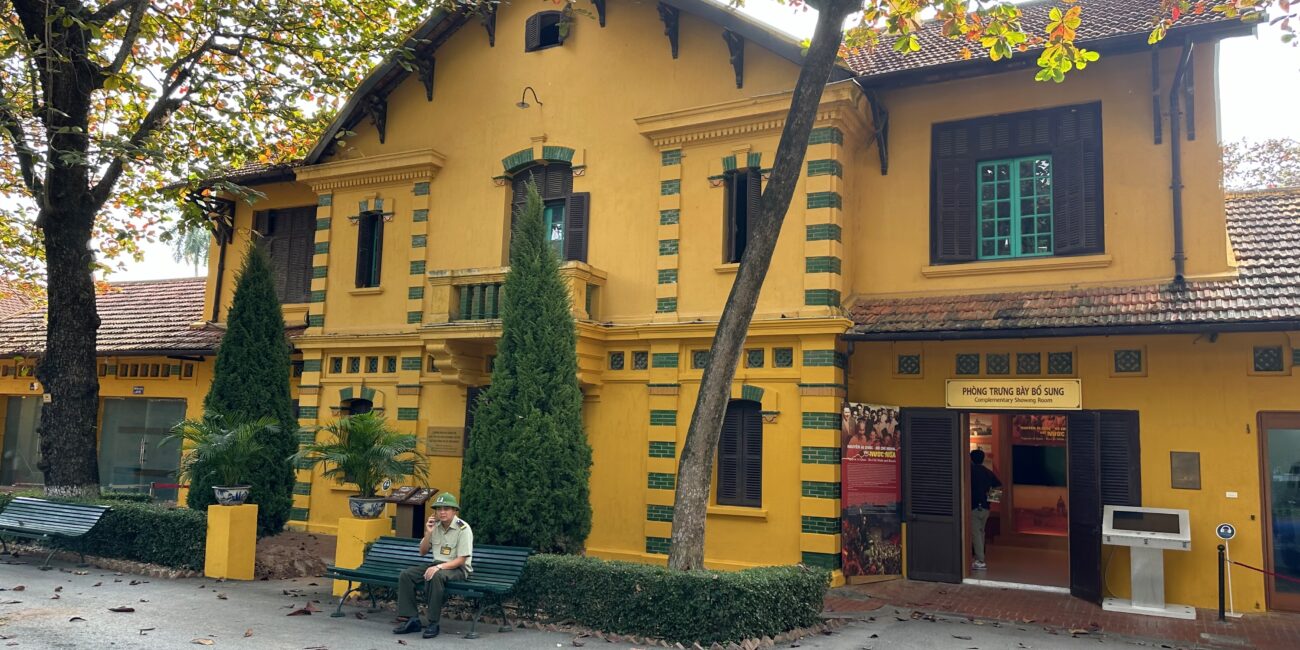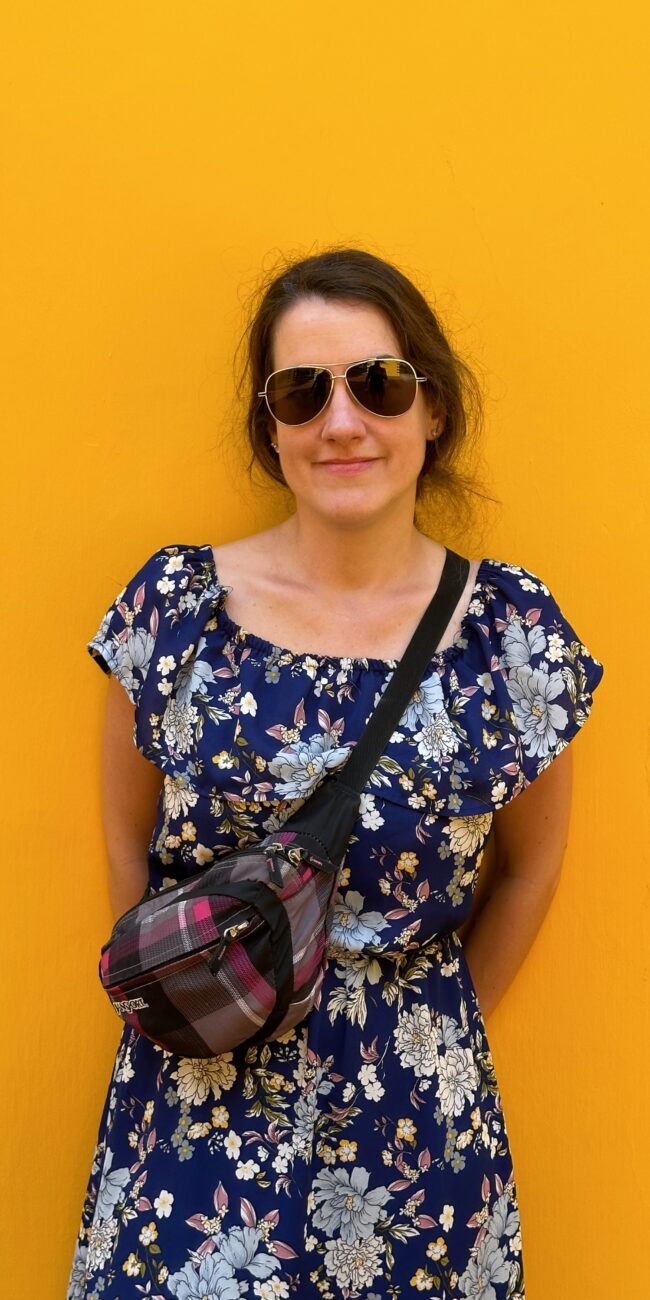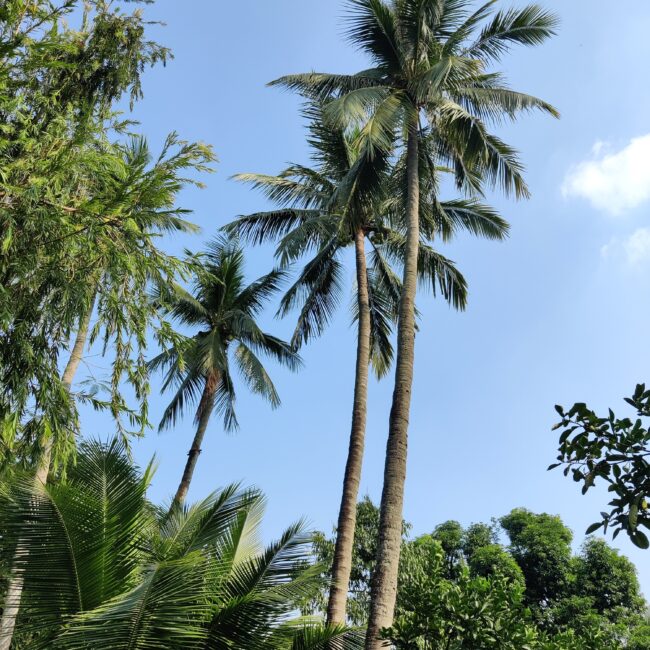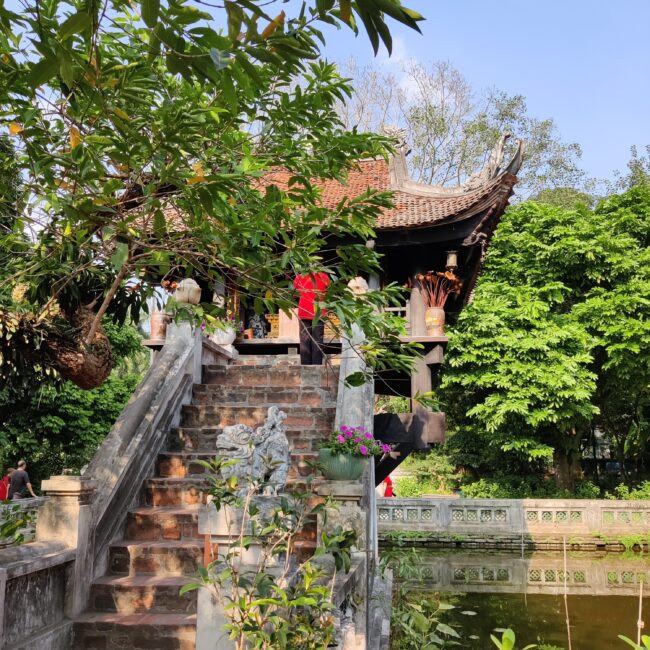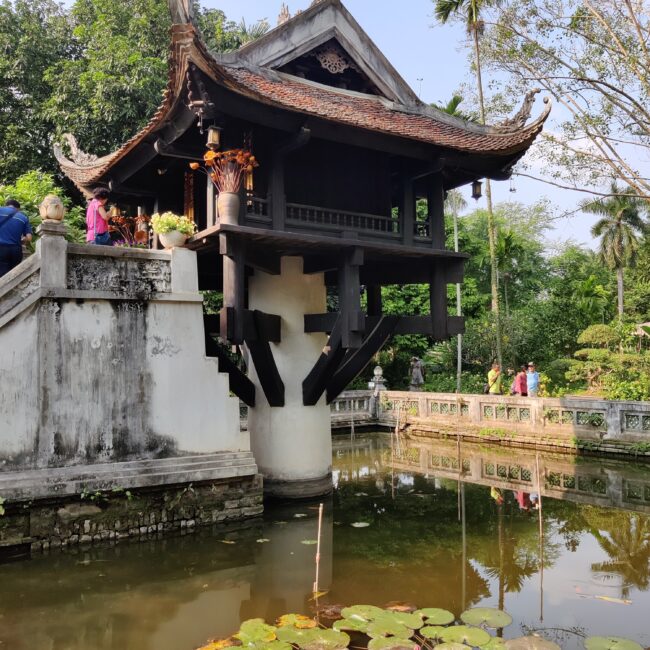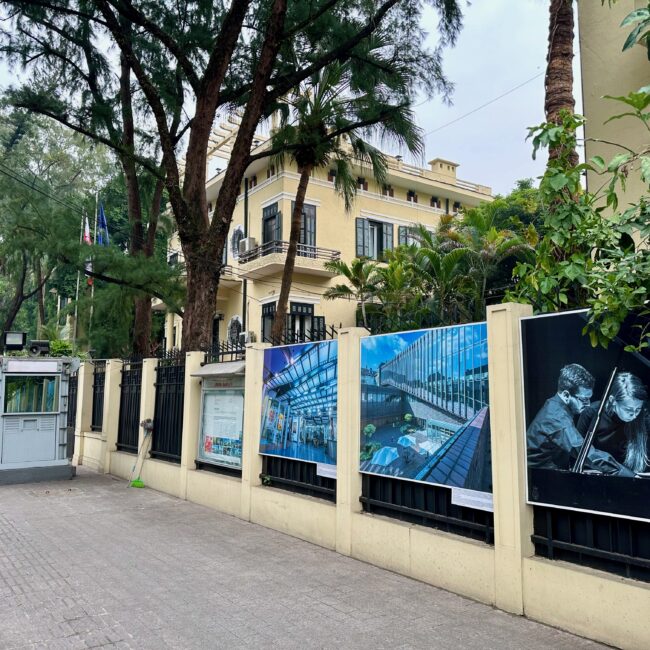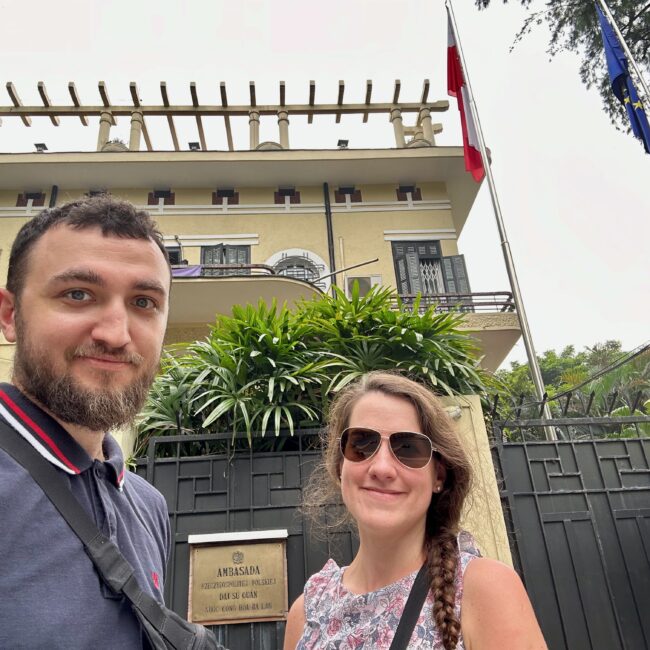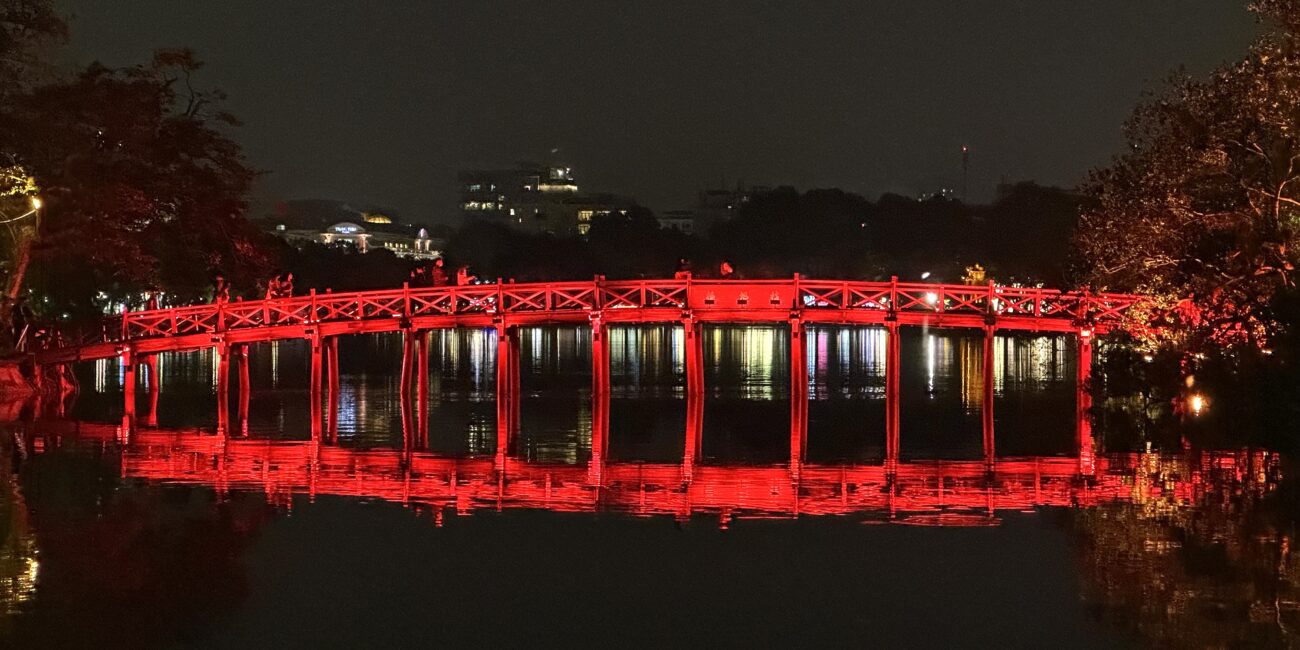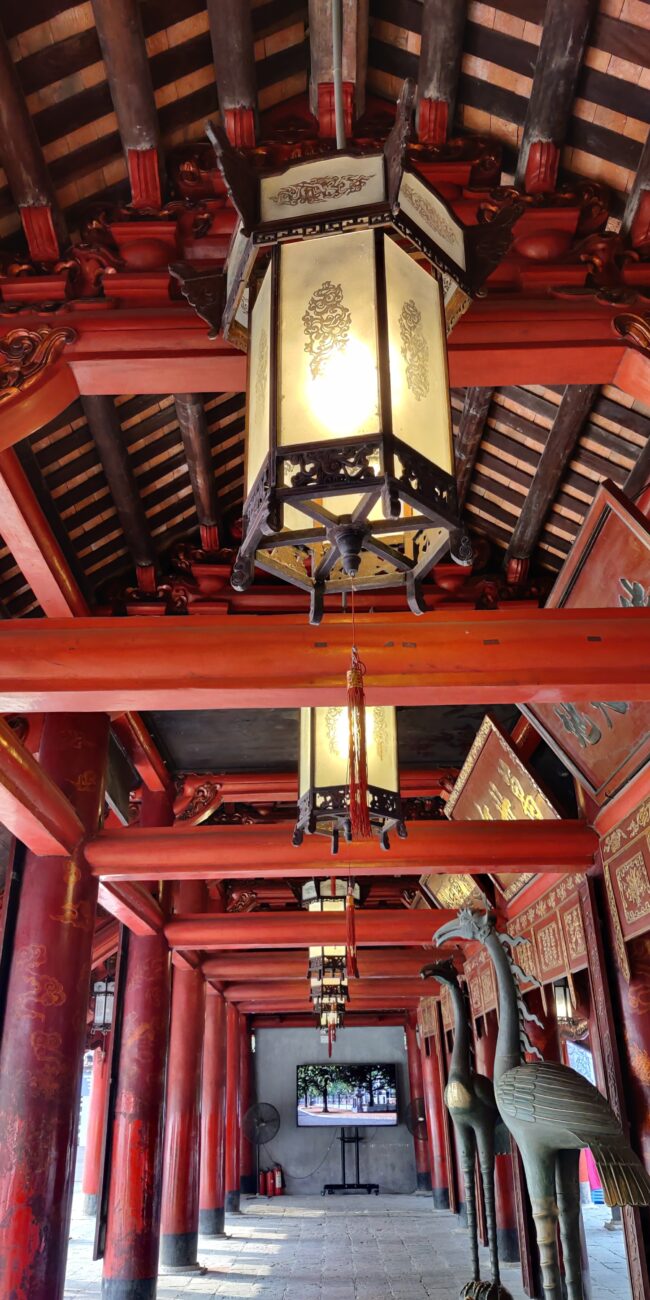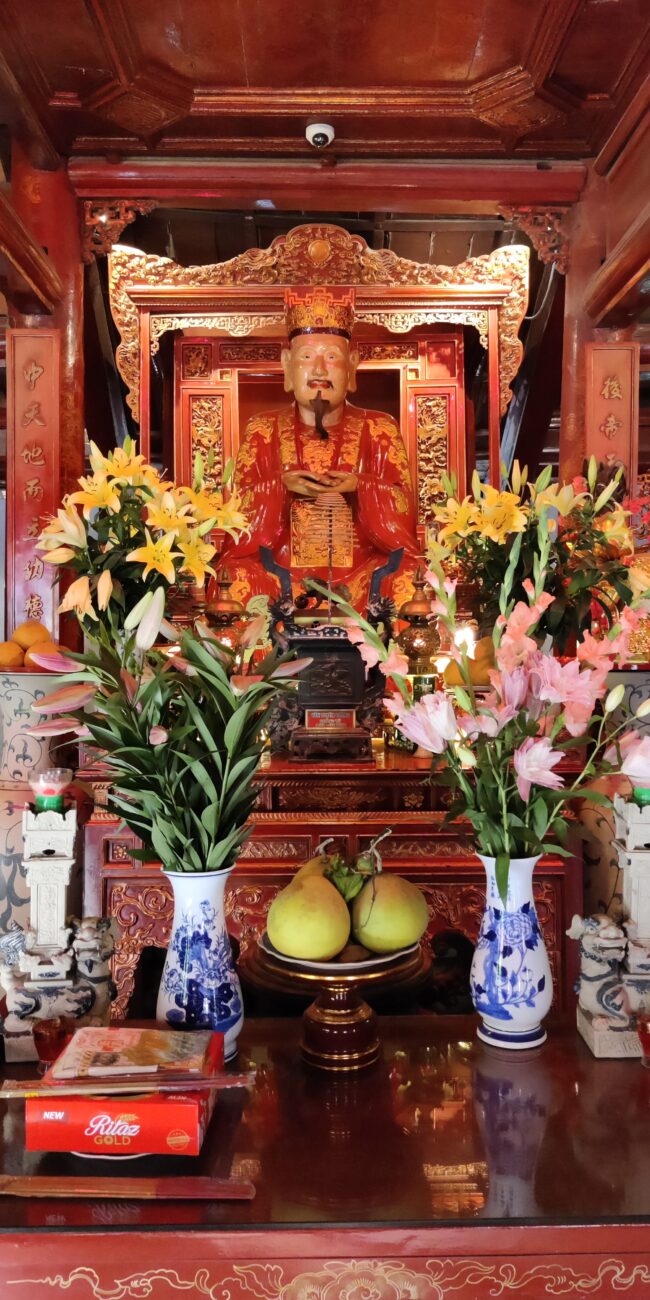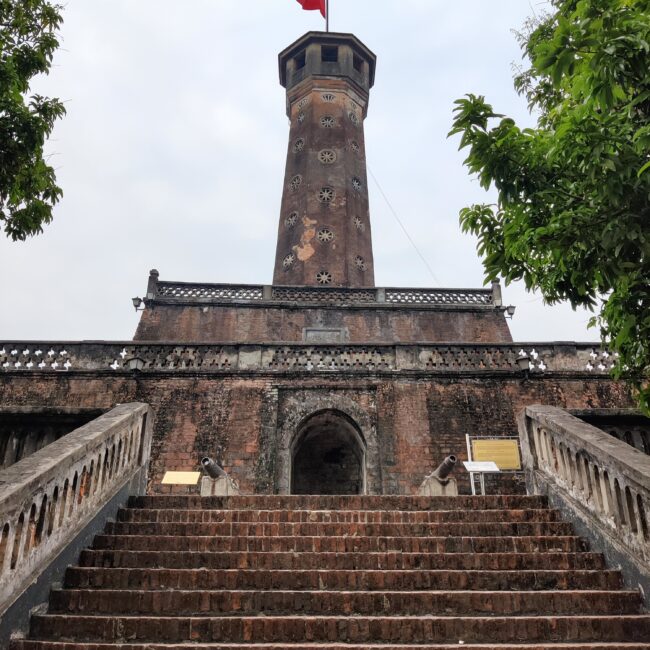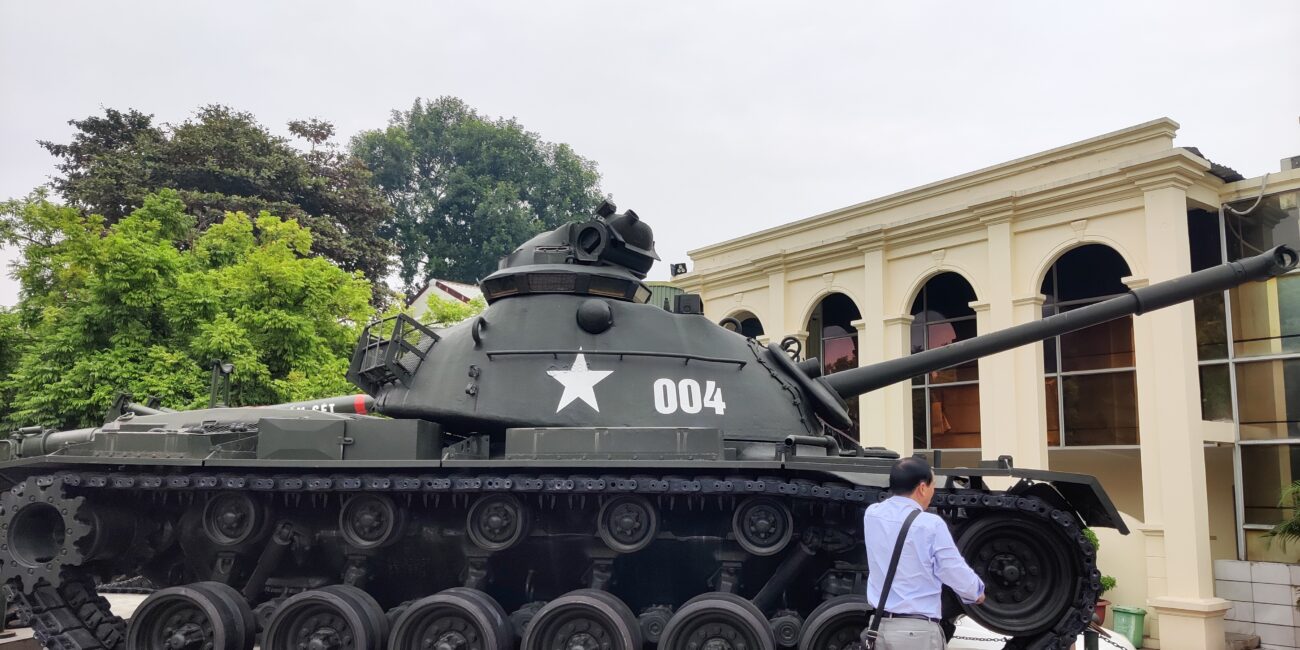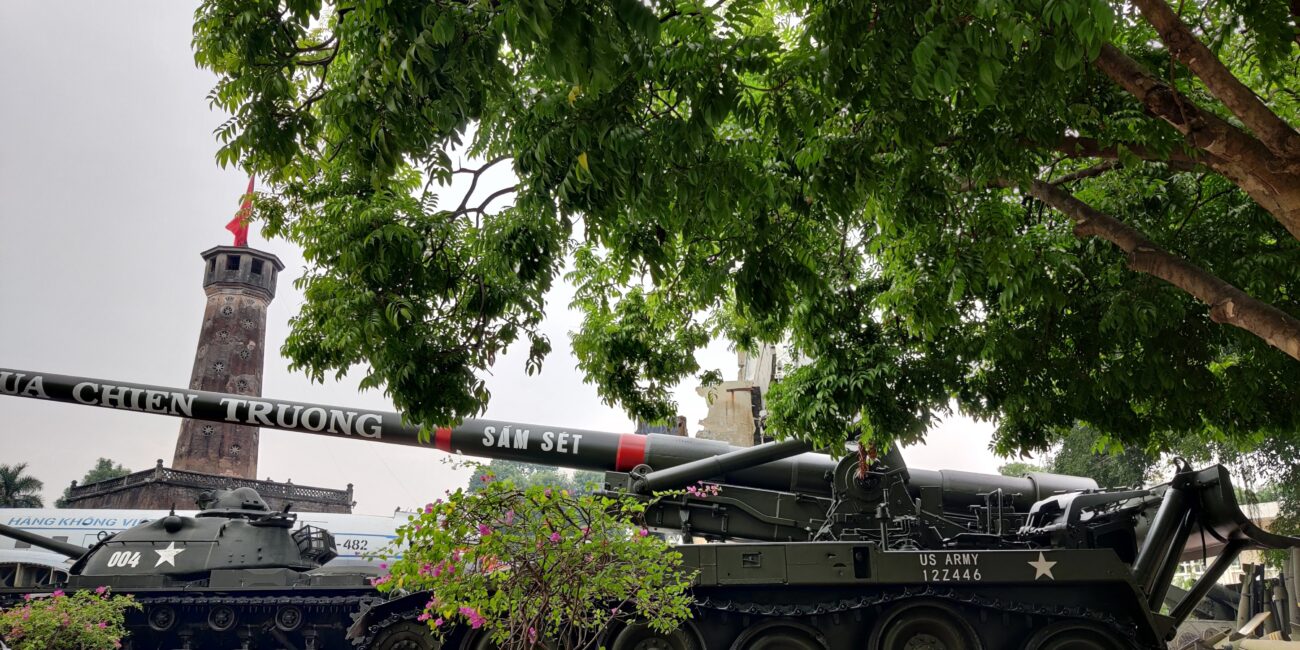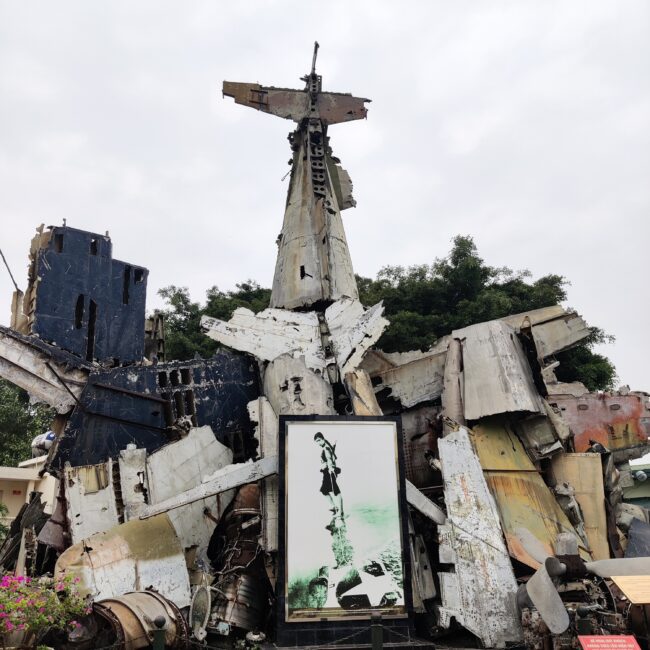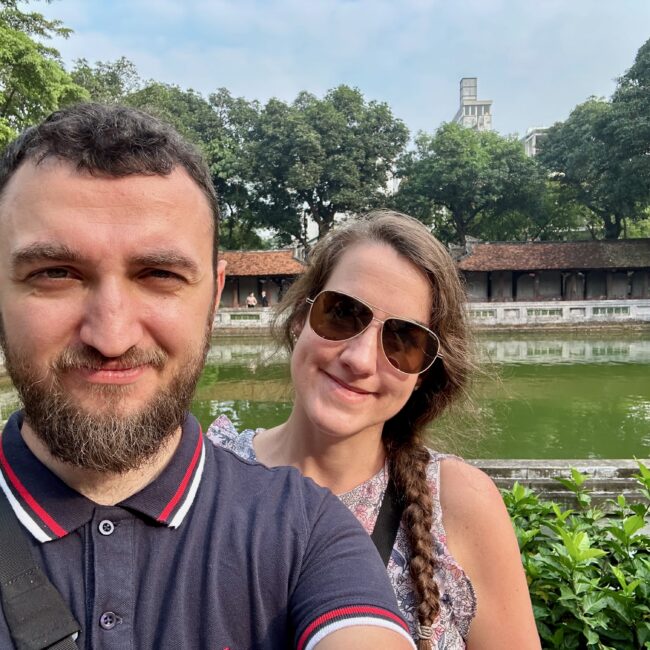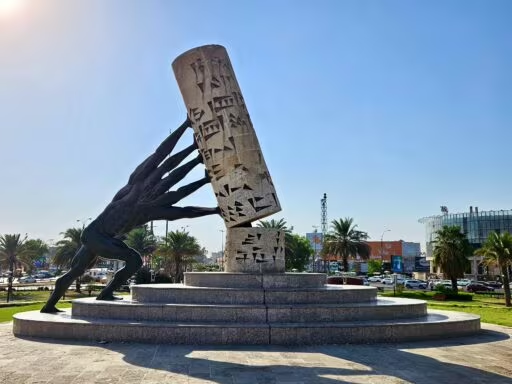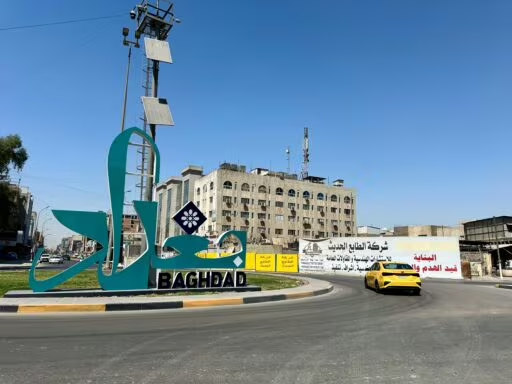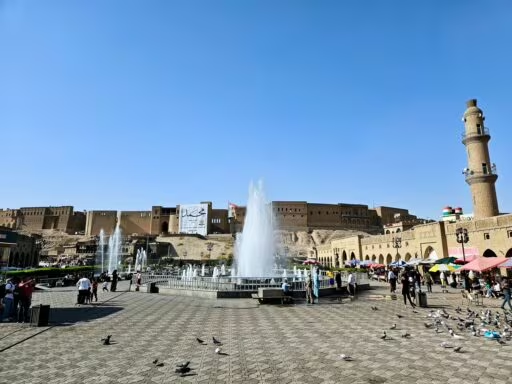This post is also available in:
Polski
Hello! 👋
Hanoi was the last stop on our Vietnamese adventure, and although our time here was limited, we managed to visit a few key places that we considered essential. The capital of Vietnam, despite its hustle and bustle and contrasts, can surprise with its atmosphere and the history that’s right at your fingertips.
We didn’t manage to see everything – after all, vacations aren’t endless 😅 – but it gives us even more reason to return someday for a longer stay and explore more corners of this city. In the meantime, we invite you to our brief account of the places we chose to visit during our time in Hanoi!
Hanoi Train Street
viet. Phố Đường Tàu Hà Nội
Hanoi Train Street is one of the most famous, yet controversial, places in Hanoi. This street runs alongside railway tracks that cut through a residential area, with trains passing just a few centimeters from homes and cafes. It’s this unusual sight – the tracks squeezed between buildings – that draws crowds of tourists eager to capture the scene in photos.
The atmosphere really has its charm. Jadzia really liked it. Unfortunately, we missed the moment when a train passed by, so we missed out on those famous moments when you have to step away from the tracks just seconds before the train rushes by.
I, on the other hand, viewed the place a bit more critically. I didn’t like the way customers were being lured into cafes – in many of them, in order to stay longer and watch the train pass, you had to order something. There wouldn’t be anything wrong with that, except for the fact that the prices in some places were inflated, and the bills – somewhat inflated as well.
Scams? Unfortunately, yes
One has to be cautious of people trying to charge entry fees for the street, even though it is a public space. We also saw situations where tourists were told they had to buy coffee or food just to be allowed to sit in the cafe.
Despite these drawbacks, Hanoi Train Street has its charm—especially when viewed as a symbol of the daily life of residents who have lived in such close proximity to the tracks for years. However, it’s important to approach this spot with caution and awareness to avoid being taken advantage of. If you enjoy unconventional places, this is a must-see—if only to judge for yourself whether it impresses or, perhaps, leaves you a bit disappointed.
The Note Coffee
The Note Coffee is a popular spot in Hanoi, located right by Hoàn Kiếm Lake. This café stands out not only for its prime location but also for its unique décor. The walls, ceilings, and even the furniture are covered with colorful notes from visitors around the world. Anyone can leave their mark—just ask for a note and pen when ordering your coffee.
On the downside, we noticed a problem on the ground floor—there were a lot of insects, mainly bees and other flying creatures. It seemed like they were attracted by the sweet drinks and the aromatic smells of coffee. If you’re not a fan of bees, we recommend heading straight to the upper floors, where it’s much calmer.
The menu features classics like iced coffee, smoothies, and tea, but the most popular drink is egg coffee – a traditional Vietnamese coffee with egg, which is definitely worth trying when in Hanoi.
👉 For more information, visit the cafe’s Facebook fanpage.
Ho Chi Minh Mausoleum
viet. Lăng Chủ tịch Hồ Chí Minh
Ho Chi Minh Mausoleum is one of the most important places in Hanoi and a national symbol of Vietnam. Located at Ba Dinh Square, it is where Ho Chi Minh declared Vietnam’s independence in 1945. Today, it is the resting place of the embalmed body of the leader, and for many Vietnamese, it serves as a pilgrimage site to pay respects.
The building impresses with its monumental, simple architecture made of gray granite. In front of the entrance, there is a square with lawns and pathways, adding to the solemnity of the place. Around the mausoleum, guards in white uniforms stand watch, ensuring order and adherence to the rules. The atmosphere is very serious and full of respect.
Admission to the mausoleum is free, but queues can be long, especially in the morning.
Ho Chi Minh House
viet. Nhà sàn Bác Hồ
Ho Chi Minh’s Stilt House is a place that immediately attracts with its simplicity and tranquility. It is located right next to the Ho Chi Minh Mausoleum, making it easy to visit both sites during your tour.
The house was built in 1958 and served as the residence and workplace of Ho Chi Minh for many years. The stilted structure draws inspiration from traditional Vietnamese rural homes—simple, wooden, with small rooms. Everything here exudes modesty, which highlights the humble lifestyle led by the leader.
Walking around the area, you can feel a sense of peace and harmony – there is plenty of greenery, well-maintained gardens, and a small lake. The whole place gives the impression of a quiet oasis in the heart of bustling Hanoi.
The interior of the house can be viewed through the windows – it contains basic furniture, a desk with books, a typewriter, and a bed. There are no luxuries here, which makes a strong impression on many visitors.
One Pillar Pagoda
viet. Chùa Một Cột
The One Pillar Pagoda is another iconic landmark in Hanoi. Built in 1049 by Emperor Lý Thái Tông, it features a unique design that attracts tourists from all over the world.
Legend has it that the emperor had a dream in which the Goddess of Mercy, Bodhisattva Avalokiteshvara, appeared sitting on a lotus flower. Inspired by this dream, he decided to build a temple on water that would symbolize this flower. The structure, mounted on a single pillar, indeed resembles a lotus flower emerging from the lake – a symbol of purity and spiritual enlightenment in Buddhism.
Despite its small size, the Temple of One Pillar impresses with its unique construction. The entire structure stands on a single stone pillar, and its roof is adorned with dragon motifs – a symbol of imperial power. The current version of the temple is a reconstruction, as the original was destroyed in 1954 during the war.
Unfortunately, as with most popular tourist attractions, it’s important to watch out for pickpockets here as well. The crowds of visitors, especially during the tourist season, provide an opportunity for them to act. It’s a good idea to keep backpacks in front of you and store documents and money in a secure place.
Embassy of Poland
viet. Đại sứ quán Cộng hoà Ba Lan
During our travels, we have a little habit – we like to check how the Polish embassy looks in each country. In Hanoi, we couldn’t resist doing the same.
It’s a place that, although we visit out of curiosity, provides a sense of security. In case of need, we can count on consular assistance, which is reassuring when traveling so far from home.
If for any reason you need to contact the embassy, it’s best to check their working hours and available services in advance. The embassy provides assistance, such as issuing temporary passports in case of loss or legal issues.
When walking around the embassy, it’s a good idea to exercise discretion when taking photos. In Vietnam, as in many other countries, photographing government buildings or embassies can be seen as a potential security risk.
We didn’t encounter any issues, but it’s better to avoid situations that could provoke the authorities—especially since Hanoi has a large number of embassies, and their surroundings are often under surveillance.
Ngoc Son Temple
viet. Đền Ngọc Sơn
The Ngoc Son Temple, located on a picturesque island in Hoàn Kiếm Lake, is one of the most recognizable landmarks in Hanoi. To reach the temple, you cross the famous red Huc Bridge, which itself is a fantastic photo opportunity.
The Ngoc Son Temple was originally built in the 13th century, but its current structure dates back to the 19th century. It is dedicated to several important figures, including General Trần Hưng Đạo, who is famous for his victories over the Mongols, and the Confucian scholar Văn Xương. The entire complex symbolizes spirituality, knowledge, and bravery.
Although the place is very popular among tourists and locals, we didn’t feel overcrowded. It was peaceful, and the view of the lake added to the atmosphere. The temple itself isn’t very large, but its architectural details and ornaments are worth noticing.
Entrance is payable in cash only – tickets are purchased before entering, so it is advisable to prepare small denominations in advance.
Hanoi Flagtower
viet. Cột cờ Hà Nội
The Hanoi Flag Tower, located within the Military History Museum complex, is one of the few landmarks that survived both the French colonization and the Vietnam War. Built between 1805 and 1812 during the reign of the Nguyễn dynasty, it served as an observation and signaling point for soldiers, symbolizing the military power of Hanoi’s defense. Today, it is regarded as a national symbol and one of the oldest preserved historical sites in the city.
During our visit, we managed to enter without having to pay for tickets—perhaps we were there outside of the regular hours or the staff simply took us for particularly lost tourists. The site is small, and a relaxed visit takes around 20-30 minutes.
Within the Military History Museum, near the Hanoi Flagtower, lies the wreckage of an American B-52 bomber shot down during the Vietnam War. This exhibit is an important part of the museum’s collection, serving as a reminder of the region’s difficult history.
It is also worth mentioning that the Hanoi Flagtower consists of three levels, with a total height of 33.4 meters (over 40 meters including the flagpole). The tower has the shape of an octagonal cylinder, with 54 spiral steps leading to the top and 39 fan-shaped openings that provide lighting and ventilation.
Temple of Literature
viet. Văn Miếu – Quốc Tử Giám
The Temple of Literature, founded in 1070 by Emperor Lý Thánh Tông, is one of the oldest landmarks in Hanoi. Initially dedicated to Confucius and his disciples and scholars, it later became the site of the Quốc Tử Giám in 1076 – the first university in Vietnam, primarily intended for the sons of mandarins and members of the royal family.
This place has been a center of education, science, and culture for centuries, and today it stands as a popular tourist attraction and a symbol of national heritage.
Payment – Unfortunately, only by cash.
👉 For more information, visit the official website.
Summary
A few key but quite pleasant places – that’s a brief summary of our stay in Hanoi. The capital of Vietnam offered us a substantial dose of history, culture, and a bit of chaotic urban atmosphere. There were moments when we could relax, but also times that pushed us to act quickly – as often happens during a trip.
Although we didn’t manage to see everything on our list, we feel that we’ve experienced the best of what the city has to offer. Hanoi is a place we’ll probably return to, as it certainly holds more hidden corners worth discovering.
Meanwhile, our adventure in Vietnam is coming to an end. Almost a month on the go, countless hours on buses, and hundreds of photos. Vietnam is a country full of contrasts, flavors, and views unlike anything we’ve seen before.
If you’ve made it to the end of our story, thank you for joining us! Who knows – maybe our experiences will help you plan your own adventure. And if you want to read more, feel free to check out our previous posts from the trip. 🚶♂️ ✈️ 🌏

